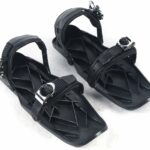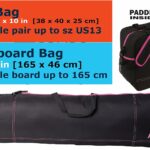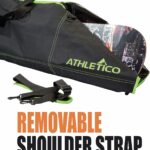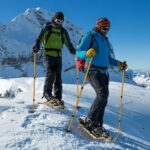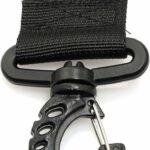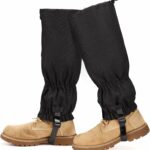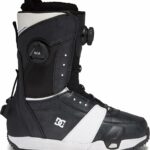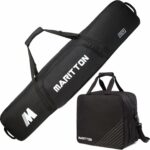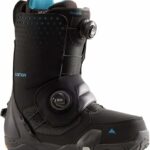So, you’ve got your hands on a snowmobile and can’t wait to zip through the snowy terrains. But before you begin your frosty adventure, there’s one crucial piece to navigate – starting your snowmobile. This article will expertly guide you through each meticulous step to ensure you’re starting your snowmobile safely and efficiently. Buckle up, and prepare for the fun part of winter!
Understanding the Basics of a Snowmobile
There’s something about the combination of fresh snow and a snowmobile that ignites adrenaline in most outdoor enthusiasts. Whether you just bought a snowmobile or you are considering buying one, it is essential to understand its basics and how it works.
Getting to know the key parts
The first step to understanding the operation of any machine, including a snowmobile, is getting acquainted with its key parts. Your snowmobile basically splits up into three key sections, which include the engine, drivetrain, and steering.
The engine is the heart of the snowmobile, providing the power needed to traverse the frozen tracts. The drivetrain, which includes the clutch system and track assembly, converts the engine’s power into movement. Finally, the steering mechanism, consisting of the handlebars and skis, enables you to navigate your snowmobile.
Learning what each part does
Once you understand the function of each of these key parts, controlling your snowmobile becomes less daunting. The engine, powered by a mixture of gasoline and oil, drives the snowmobile. The drivetrain, comprising the primary and secondary clutches, transfers power from the engine to the track, propelling the machine forward or backward.
The skis, typically located at the snowmobile’s front, steer the machine by shifting on the snow. The machine’s control levers (including throttle and brake), and gauges are mounted on the handlebars, putting all vital controls right at your fingertips.
Preparing the Snowmobile for Start
Before you hop on your snowmobile and begin your snow-laden journey, there are a few steps you need to follow to ensure your ride is safe and smooth.
Checking for damages
Begin by performing a thorough inspection of the snowmobile. Check the handlebars for any looseness, ensure the skis aren’t dented or damaged, and carefully inspect the track for any cuts or tears that could affect its performance or safety.
Ensuring fuel and oil levels are adequate
Next, ensure you have an adequate amount of fuel and oil. Most snowmobile engines require a mix of gasoline and two-stroke oil. Checking your oil level regularly is crucial to have a safely functioning machine.
Examining the throttle and brakes for proper function
Finally, give your throttle a squeeze and release it, ensuring it springs back to its original position each time. Check your brakes, making sure they’re not too loose or too tight, and adjust if necessary. These steps might seem insignificant, but assure you – they are essential to a safe ride.
Safely Putting on Your Snowmobile Gear
Before you climb aboard your snowmobile, it’s time to gear up to ensure your safety during the ride.
Choosing the right outfits
When it comes to clothing, layers are your best friend in snowy conditions. Start with a moisture-wicking base layer to help keep you dry and follow up with a warm mid-layer. Lastly, wear an insulated, waterproof outer layer to keep cold and wet snow at bay.
Importance of helmets
Never underestimate the importance of a good helmet when snowmobiling. It not only protects you from potentially severe injuries but also shields you from the elements. Look for a helmet specifically designed for snowmobiling – complete with insulating properties, proper ventilation, and a face shield to protect your eyes from snow and ice.
Using other safety gears such as goggles and gloves
Additionally, gloves and goggles are a must-have. Gloves protect your hands from freezing temperatures and provide a better grip, while goggles safeguard your eyes against wind and snow. Investing in quality safety gear is a must for any snowmobiling enthusiast.
Locating the Snowmobile Controls
Now that you’re well-versed with the safety measures, let’s get familiar with the controls of your snowmobile.
Usually, the start button is located on the left handlebar and is often combined with the stop button. It should be clearly visible and marked to avoid any confusion.
Locating the throttle
The throttle, which controls the speed of the snowmobile, is generally a lever on the right handlebar. Pushing it increases the engine’s speed, and releasing it slows down the machine.
Finding the brake lever
On the opposite handlebar, you’ll find the brake lever. Similar to a bicycle or motorcycle brake, squeeze this lever to slow the snowmobile.
Identifying the steering functionalities
Your steering functionalities are mainly dominated by your handlebars and the front skis they control. Turning the handlebars in the desired direction will cause the skis to turn and lead the snowmobile in that same direction.
Starting the Snowmobile Engine
In a cold environment, starting a snowmobile could be a bit tricky. However, understanding the process makes it much simpler.
Turning the key
Insert the key in the ignition, usually located nearby the handlebars, and turn it to the ‘ON’ position. Often the key has two positions: ‘OFF’ and ‘RUN’. Make sure it’s in the ‘RUN’ position.
Press the start button to ignite the engine. Depending on the temperature, the engine might take a few tries to get started. Be patient and avoid holding the start button for extended periods to prevent damaging the starter.
Listening for the engine’s response
Once the engine starts, listen to its response. It should settle into a steady but high idle. This high idle will gradually lower as the engine warms up.
Understanding the Throttle and Brake
Being able to control your speed and stop the machine effectively is crucial towards mastering the skill of snowmobiling.
Using the throttle
The throttle’s function is simple- squeeze it to speed up, release it to slow down. However, remember that acceleration should be smooth and gradual, especially for beginners.
Operating the brake
To stop your snowmobile, you need to press the brake lever on the left handlebar. Much like the throttle, any changes to your speed should be gradual to avoid upsetting the snowmobile’s balance.
Balancing the use of both during a ride
Mastering the balance between the throttle and brake can take some practice. Remember, moderation is the key. Excessive throttle can cause you to lose control, while overuse of the brakes can make your snowmobile skid.
Getting the Snowmobile Moving
Now that you’re familiar with the controls and engine startup, the next step is to get your snowmobile moving.
Putting the snowmobile into gear
Most snowmobiles are direct drive, which means they’re always in gear. So, once you start your engine, it’s ready to move.
Applying the throttle correctly
Gradually squeeze the throttle and feel the snowmobile begin to move. Make sure you keep your movements smooth and controlled.
Steering in the intended direction
For most snowmobiles, steering is as simple as turning the handlebars in the direction you want to go. However, some curves may require body input. Leaning a bit in your desired direction can help make sharper turns.
Handling the Snowmobile during a Ride
Being able to handle your snowmobile effectively whilst riding is an acquired skill that improves with practice and understanding your machine.
Leaning into turns
During turns, shifting your body weight toward the inside of the turn can help the snowmobile maneuver better. It prevents the chance of tipping over, especially during sharp turns.
Adjusting speed based on conditions
Your speed should always match the trail conditions and visibility. When you encounter rough terrain or limited vision, slowing down is the best way to maintain control.
Different snow types may require different riding techniques. For example, fresh powder allows for easier turning, while hard-packed snow may be slippery and require cautious riding. Take your time to understand how your snowmobile responds to different conditions.
Stopping the Snowmobile Safely
Knowing how to stop your snowmobile safely is just as important as knowing how to start it.
Applying the brake
Pressing the brake lever will engage the braking mechanism, and the snowmobile will start to decrease speed. The more firmly you squeeze the brake, the more quickly your snowmobile will stop.
Stopping gradually
Abrupt stops can be dangerous as they could cause you to lose control of your snowmobile. Whenever possible, aim to stop gradually to maintain better control and prevent accidents.
Switching the engine off
Once you have stopped, switch off the engine by turning the key to the ‘OFF’ position or by pressing the stop button. Remove the key from the ignition to prevent any accidental starts.
Maintaining Your Snowmobile
Proper maintenance is key to extending your snowmobile’s lifespan and ensuring many seasons of reliable service.
Regular inspection
Inspect your snowmobile frequently for signs of wear and tear. Pay extra attention to the track, the skis, and the engine.
Timely replacement of damaged parts
Replace any damaged or worn out parts immediately. Small problems can quickly turn into major ones if they aren’t addressed promptly.
Proper storage of snowmobile after use
Finally, store your snowmobile in a clean and dry place after use. Cover it to protect it from any dust or damage. This will ensure that your snowmobile remains in top shape and ready for the next ride.
And that’s it – you’re now well equipped to start, ride, and maintain your snowmobile! Remember, practice makes perfect, so don’t be discouraged if things don’t go perfectly at first. With time, you’ll become more familiar with your snowmobile and develop your skills to master the trails like a pro.
- What Snowboard Bindings Should I Get? - January 23, 2024
- What Size Screws For Snowboard Bindings? - January 23, 2024
- How To Snowmobile On Water? - January 23, 2024

